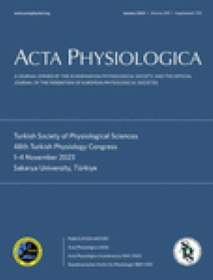Lactate orchestrates metabolic hemodynamic adaptations through a unique combination of venocontraction, artery relaxation, and positive inotropy
Abstract
Aim
H+ facilitates metabolic blood flow regulation while negatively impacting cardiac contractility. Cardiovascular consequences of conjugate bases accumulating alongside H+ remain unclear. Here, we evaluate the cardiovascular effects of nine prominent carboxylates—particularly lactate, 3-hydroxybutyrate, and butyrate—linked to metabolic and microbial activity.
Methods
Comparing the actions of pH-adjusted Na-carboxylates to equiosmolar NaCl, we study arteries and veins isolated from healthy rats and humans with ischaemic heart disease, isolated perfused rat hearts, and rat cardiovascular function in vivo.
Results
The tested carboxylates generally relax arteries and veins. L-lactate relaxes human and rat arteries up to 70% (EC50 = 10.1 mM) and rat brachial and mesenteric veins up to 30% of pre-contractions, yet stands out by augmenting contractions of rat femoral, saphenous, and lateral marginal veins and human internal thoracic and great saphenous veins up to 50%. D-lactate shows only minor actions. In isolated perfused hearts, 10 mM L-lactate increases coronary flow (17.1 ± 7.7%) and left ventricular developed pressure (10.1 ± 3.0%) without affecting heart rate. L-lactate infusion in rats—reaching 3.7 ± 0.3 mM in the circulation—increases left ventricular end-diastolic volume (11.3 ± 2.8%), stroke volume (22.6 ± 3.0%), cardiac output (23.4 ± 3.5%), and ejection fraction (10.6 ± 2.0%), and lowers systemic vascular resistance (34.1 ± 3.7%) without influencing blood pressure or heart rate. The ketone body 3-hydroxybutyrate causes lactate accumulation and elevates left ventricular end-diastolic volume in vivo.
Conclusion
Carboxylate metabolites generally relax arteries and veins. L-lactate relaxes arteries, lowering systemic vascular resistance, causes preferential venocontraction with increased ventricular diastolic filling, and elevates cardiac contractility and cardiac output. We propose that L-lactate optimizes cardiovascular function during metabolic disturbances.


 求助内容:
求助内容: 应助结果提醒方式:
应助结果提醒方式:


